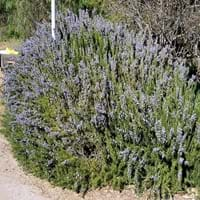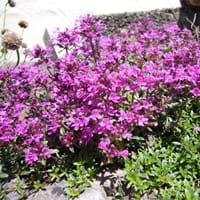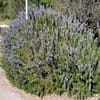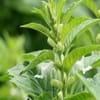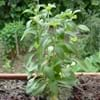Life Span
Perennial
Perennial
Origin
Southern Europe, Mediterranean
Europe, Mediterranean
Types
Not Available
Not Available
Number of Varieties
Not Available
Habitat
By seashore, Rocky areas, Scrubs
Sandy areas, Stony hillsides, Upland soils
USDA Hardiness Zone
8-11
Not Available
Sunset Zone
H1, H2, 4, 5, 6, 7, 8, 9, 10, 11, 12, 13, 14, 15, 16, 17, 18, 19, 20, 21, 22, 23, 24
A2, A3, 1a, 1b, 2a, 2b, 3a, 3b, 4, 5, 6, 7, 8, 9, 10, 11, 12, 13, 14, 15, 16, 17, 18, 19, 20, 21, 22, 23, 24
Habit
Prostrate/Trailing
Mat-forming
Minimum Height
Not Available
Minimum Width
Not Available
Flower Color
Blue, Lavender
Purple, Light Pink
Flower Color Modifier
Bicolor
Bicolor
Fruit Color
Not Available
Not Available
Leaf Color in Spring
Green, Gray Green
Green
Leaf Color in Summer
Green, Gray Green
Green
Leaf Color in Fall
Green, Gray Green
Green
Leaf Color in Winter
Light Green
Light Green
Leaf Shape
Needle like
Oval
Plant Season
Spring, Summer, Fall, Winter
Spring, Summer, Fall, Winter
Sunlight
Full Sun
Full Sun, Partial Sun
Type of Soil
Loam, Sand
Sand
The pH of Soil
Neutral, Alkaline
Neutral, Alkaline
Soil Drainage
Well drained
Well drained
Bloom Time
Early Spring, Spring, Winter, Late Winter
Summer
Tolerances
Drought
Drought
Where to Plant?
Ground
Container, Ground
How to Plant?
Seedlings
Divison, Seedlings
Plant Maintenance
Medium
Medium
Watering Requirements
occasional watering once established
Average Water Needs
In Summer
Lots of watering
Lots of watering
In Spring
Moderate
Moderate
In Winter
Average Water
Average Water
Soil pH
Neutral, Alkaline
Neutral, Alkaline
Soil Type
Loam, Sand
Sand
Soil Drainage Capacity
Well drained
Well drained
Sun Exposure
Full Sun
Full Sun, Partial Sun
Pruning
Remove damaged leaves, Remove dead branches, Remove dead leaves
Remove damaged leaves, Remove dead branches, Remove dead leaves
Fertilizers
All-Purpose Liquid Fertilizer
All-Purpose Liquid Fertilizer
Pests and Diseases
Red blotch, Whiteflies
Not Available
Plant Tolerance
Drought
Drought
Flower Petal Number
Single
Single
Fragrant Bark/Stem
Yes
Yes
Foliage Texture
Fine
Fine
Foliage Sheen
Matte
Matte
Attracts
Hummingbirds
Flies
Allergy
Skin rash
Skin irritation
Aesthetic Uses
Not Available
Showy Purposes, Used for decorating walls, fences, gates, hedges, etc.
Beauty Benefits
Not Available
Not Available
Environmental Uses
Air purification
Air purification
Medicinal Uses
Antiseptic, Antispasmodic, Cardiac
Folklore
Part of Plant Used
Leaves
Flowers, Leaves
Other Uses
Incense, Repellent, Used as a dye
Decoration Purposes, useful as a ground cover
Used As Indoor Plant
No
No
Used As Outdoor Plant
Yes
Yes
Garden Design
Container, Edging, Edible, Groundcover, Herb / Vegetable, Rock Garden / Wall
Edging, Edible, Groundcover, Herb / Vegetable, Lawns and Turf, Mixed Border, Rock Garden / Wall
Botanical Name
ROSMARINUS officinalis 'Lockwood de Forest'
THYMUS serpyllum
Common Name
Lockwood de Forest Rosemary, Prostrate Rosemary, Rosemary
Creeping Thyme, Breckland thyme, Breckland-garden, Mother-of-thyme, Wild thyme
In Hindi
गुलमेंहदी
Creeping Thyme
In German
Rosmarin
Feldthymian, Quendel
In French
Rosmarinus officinalis
Serpolet, Thym sauvage
In Spanish
Alecrim
Serpol, Tomillo
In Greek
prostrate rosemary
Creeping Thyme
In Portuguese
Rozmaryn lekarski
Tomilho
In Polish
Rosmarinus officinalis
Creeping Thyme
In Latin
prostrate rosemary
Creeping Thyme
Phylum
Magnoliophyta
Magnoliophyta
Class
Magnoliopsida
Magnoliopsida
Family
Lamiaceae
Lamiaceae
Clade
Angiosperms, Asterids, Eudicots
Angiosperms, Asterids, Eudicots
Subfamily
Nepetoideae
Nepetoideae
Number of Species
Not Available
Season and Care of Prostrate Rosemary and Creeping Thyme
Season and care of Prostrate Rosemary and Creeping Thyme is important to know. While considering everything about Prostrate Rosemary and Creeping Thyme Care, growing season is an essential factor. Prostrate Rosemary season is Spring, Summer, Fall and Winter and Creeping Thyme season is Spring, Summer, Fall and Winter. The type of soil for Prostrate Rosemary is Loam, Sand and for Creeping Thyme is Sand while the PH of soil for Prostrate Rosemary is Neutral, Alkaline and for Creeping Thyme is Neutral, Alkaline.
Prostrate Rosemary and Creeping Thyme Physical Information
Prostrate Rosemary and Creeping Thyme physical information is very important for comparison. Prostrate Rosemary height is 150.00 cm and width 180.00 cm whereas Creeping Thyme height is Not Available and width Not Available. The color specification of Prostrate Rosemary and Creeping Thyme are as follows:
Prostrate Rosemary flower color: Blue and Lavender
Prostrate Rosemary leaf color: Green and Gray Green
Creeping Thyme flower color: Purple and Light Pink
- Creeping Thyme leaf color: Green
Care of Prostrate Rosemary and Creeping Thyme
Care of Prostrate Rosemary and Creeping Thyme include pruning, fertilizers, watering etc. Prostrate Rosemary pruning is done Remove damaged leaves, Remove dead branches and Remove dead leaves and Creeping Thyme pruning is done Remove damaged leaves, Remove dead branches and Remove dead leaves. In summer Prostrate Rosemary needs Lots of watering and in winter, it needs Average Water. Whereas, in summer Creeping Thyme needs Lots of watering and in winter, it needs Average Water.
